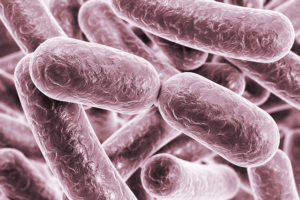Interventional Care


We notice that you are visiting us from . This site only services US-based visitors. Would you like to visit the site that is appropriate for your location?

A recent article entitled Mechanisms of increased resistance to chlorhexidine and cross-resistance to colistin following exposure of Klebsiella pneumoniae clinical isolates to chlorhexidine published in the Antimicrobial Agents and Chemotherapy journal showed how researchers induced resistance to chlorhexidine (CHG) in Klebsiella pneumoniae, and identified cross-resistance to the antibiotic, colistin—marking the first time that any bacteria was shown to exhibit resistance to CHG.
[If the resistant Klebsiella from this study was exposed to PDI’s Prevantics® antiseptics products, the bacteria would have been killed by the CHG level. Read further to see why.]
Traditionally, CHG has been used for skin antisepsis and disinfection, usually mixed with at least 70% isopropyl alcohol to provide a “1,2 punch” to kill microorganisms on a surface. CHG provides long-lasting bacterial growth inhibition whereas the alcohol provides almost immediate microorganism kill on a surface.
In this particular study, the researchers exposed the bacteria to extremely low levels of CHG. If the initial low level of CHG exposure did not kill the bacteria, then the concentration of CHG was doubled, and the bacteria was exposed again. This process continued until the researchers were able to isolate several Klebsiella strains that showed resistance to CHG. The minimum inhibitory concentration (MIC) that these resistant strains showed to CHG ranged from 0.0256-0.0512% CHG, the absolute least [amount of] CHG concentration that would kill the bacteria.
This lends itself to the key question: Should I be concerned?
In short, no (not for PDI products).
There are a couple of reasons for this. First, the percent of CHG that the Klebsiella showed resistance to is much less than the concentration found in antisepsis and disinfection solutions. In fact, it’s 61 times less than the concentration found inPDI’sPrevantics products, which contain 3.15% CHG. So, if the resistant Klebsiella from this study was exposed to our products, the bacteria would be killed by the CHG. Second, PDI products also contain 70% isopropyl alcohol, which greatly enhances the kill effect of the antiseptic solution. Additionally, this study was done in the laboratory setting, so there’s no evidence that this mutation would happen in a clinical setting with patients.
While the particular strains of Klebsiella showed increased resistance to colistin, often considered the last line of antimicrobial defense for certain multi-drug resistant organisms, there’s no need to ring the alarm quite yet. The researchers evaluated the susceptibility of the resistant Klebsiella to multiple antiseptics and antibiotics, and there was no increased resistance to anything other than colistin. So while the increased resistance to colistin is concerning, there are still other drugs the Klebsiella was susceptible to.
Additionally, this study showed something we already know—bacteria can efficiently mutate to help increase chances for survival. In this particular example, the mutation that helped the bacteria survive exposure to CHG also caused resistance to colistin. This study helps highlight the need for continued antibiotic stewardship and proper use of antiseptic and disinfection products. Through prudent use of antibiotics as well as ensuring that proper technique is followed for skin antisepsis, we can prevent this from occurring outside of the lab.
Matthew E Wand, Lucy J Bock, Laura C Bonney, J Mark Sutton. Mechanisms of increased resistance to chlorhexidine and cross-resistance to colistin following exposure of Klebsiella pneumoniae clinical isolates to chlorhexidine. Antimicrobial Agents and Chemotherapy, 2016; AAC.01162-16 DOI: 10.1128/AAC.01162-16